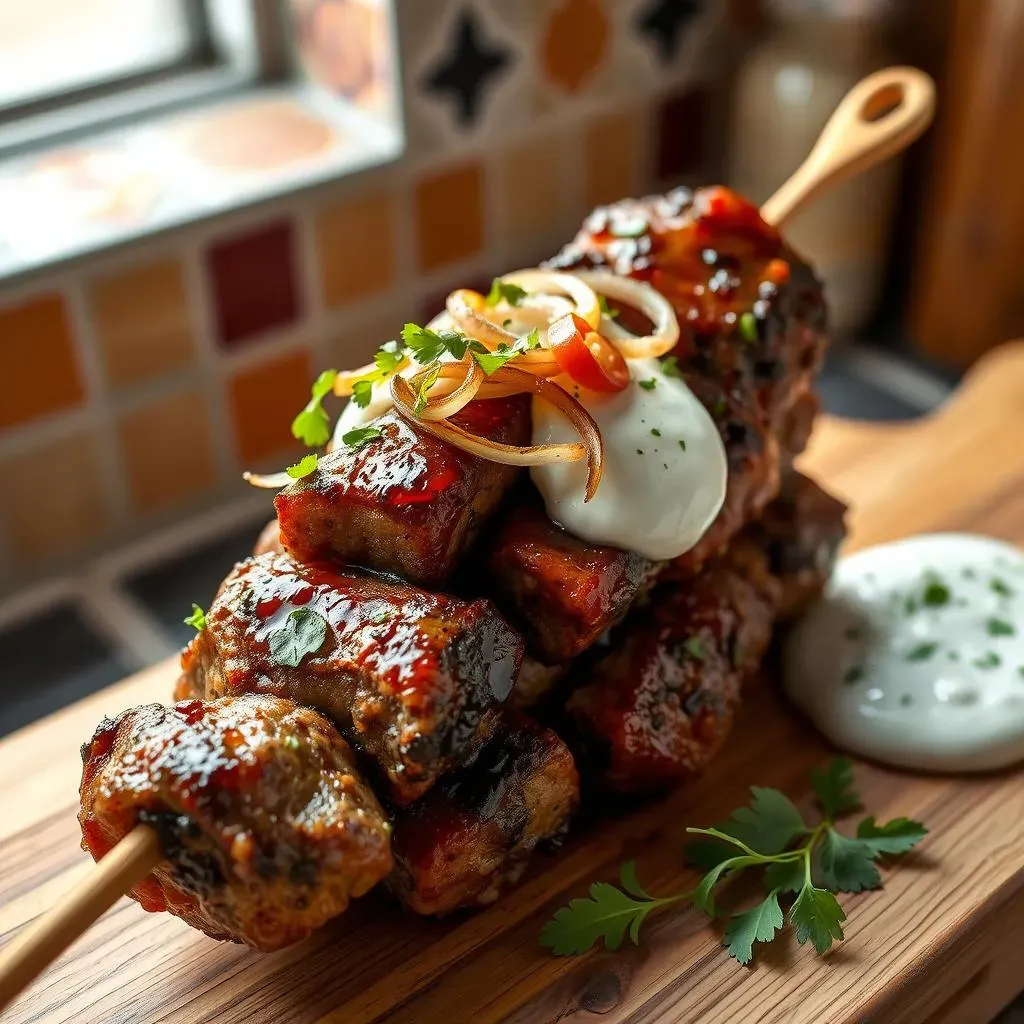Table of Contents
Are you craving the delicious taste of gyro meat, but don't know where to start when it comes to cooking it at home? Learning how to fry gyro meat at home can seem intimidating, but with the right techniques and ingredients, you can achieve that perfect, juicy flavor. In this article, we will guide you through the process of how to fry gyro meat at home, covering essential tips, common mistakes to avoid, and expert advice to ensure you get the best results. Whether you're a seasoned cook or a beginner, our step-by-step instructions will walk you through the process, making it easy to create mouth-watering gyro meat in the comfort of your own kitchen. By the end of this article, you'll be confident in your ability to fry gyro meat at home, and you'll be enjoying your favorite Greek dish in no time. So, let's get started and explore the world of how to fry gyro meat at home, where flavor and convenience come together.
Essential Tips for How to Fry Gyro Meat at Home

Essential Tips for How to Fry Gyro Meat at Home
Choosing the Right Meat and Seasoning
When it comes to frying gyro meat at home, the type of meat and seasoning you use can make all the difference. Traditionally, gyro meat is made from a combination of lamb and beef, but you can also use other meats like chicken or pork. The key is to choose a meat that is high in fat, as this will help to keep the meat juicy and flavorful. In terms of seasoning, you'll want to use a blend of spices that includes oregano, thyme, rosemary, and garlic.
To get started, you'll need to grind the meat and mix it with the seasoning blend. You can use a food processor or a meat grinder to grind the meat, and then mix it with the spices in a bowl. Be sure to handle the meat gently, as you want to avoid compacting it too much, which can make it dense and tough.
Meat Options | Seasoning Blend | Benefits |
|---|---|---|
Lamb and Beef | Oregano, Thyme, Rosemary, Garlic | Traditional flavor, juicy texture |
Chicken | Paprika, Cumin, Coriander, Cayenne Pepper | Leaner option, spicy flavor |
Techniques for Frying Gyro Meat
Once you've mixed the meat and seasoning, it's time to fry the gyro meat. There are a few different techniques you can use, depending on the texture and flavor you're looking for. One option is to form the meat into thin strips and fry them in a pan with a small amount of oil. This will give you a crispy exterior and a juicy interior.
Another option is to form the meat into small balls and fry them in a deep fryer. This will give you a crispy exterior and a fully cooked interior. Regardless of the technique you choose, be sure to cook the meat to an internal temperature of at least 165°F to ensure food safety.
- Form meat into thin strips for a crispy exterior and juicy interior
- Form meat into small balls for a crispy exterior and fully cooked interior
- Cook meat to an internal temperature of at least 165°F for food safety
The Best Ways to Fry Gyro Meat at Home for Perfect Results

The Best Ways to Fry Gyro Meat at Home for Perfect Results
Understanding the Importance of Temperature Control
When it comes to frying gyro meat at home, temperature control is crucial for achieving perfect results. If the oil is too hot, the meat can burn on the outside before it's fully cooked on the inside. On the other hand, if the oil is too cold, the meat can absorb excess oil and become greasy. To avoid these common mistakes, it's essential to invest in a thermometer that can accurately measure the temperature of the oil.
A good thermometer can help you maintain a consistent temperature between 350°F and 375°F, which is ideal for frying gyro meat. Additionally, you should also consider the type of oil you're using, as some oils have a higher smoke point than others. For example, avocado oil and grapeseed oil have a high smoke point, making them ideal for frying.
Oil Type | Smoke Point | Suitability for Frying |
|---|---|---|
Avocado Oil | 520°F | Excellent |
Grapeseed Oil | 420°F | Good |
Olive Oil | 320°F | Poor |
Mastering the Art of Frying Gyro Meat
To achieve perfect results when frying gyro meat at home, it's essential to master the art of frying. This involves using the right amount of oil, maintaining the correct temperature, and not overcrowding the pan. Additionally, you should also consider the type of pan you're using, as some pans are better suited for frying than others. For example, a cast-iron skillet or a stainless steel pan is ideal for frying, as they retain heat well and can achieve a nice crust on the meat.
Another important factor to consider is the amount of time you fry the meat. If you fry the meat for too long, it can become dry and overcooked. On the other hand, if you fry the meat for too short a time, it can be undercooked and raw in the center. To avoid these common mistakes, it's essential to use a timer and to check the meat regularly for doneness.
- Use the right amount of oil
- Maintain the correct temperature
- Don't overcrowd the pan
- Use a cast-iron skillet or stainless steel pan
- Don't fry the meat for too long
Adding the Finishing Touches
Once you've fried the gyro meat to perfection, it's time to add the finishing touches. This can include adding a squeeze of fresh lemon juice, a sprinkle of chopped parsley, or a dollop of tzatziki sauce. Additionally, you can also consider serving the gyro meat in a warm pita bread with your favorite toppings, such as tomato, onion, and cucumber.
To take your gyro meat to the next level, you can also consider adding some extra flavorings, such as a sprinkle of paprika or a pinch of cumin. These spices can add a nice depth of flavor to the meat and can help to balance out the other ingredients. Whatever you choose, the key is to have fun and to experiment with different flavors and toppings until you find the combination that works best for you.
Mistakes to Avoid When Learning How to Fry Gyro Meat at Home

Mistakes to Avoid When Learning How to Fry Gyro Meat at Home
When learning how to fry gyro meat at home, there are several mistakes to avoid in order to achieve perfect results. One of the most common mistakes is overworking the meat, which can make it dense and tough. To avoid this, it's essential to handle the meat gently and avoid overmixing it with the seasoning blend. Another mistake is not cooking the meat to the correct internal temperature, which can lead to food safety issues. It's crucial to use a thermometer to ensure the meat reaches an internal temperature of at least 165°F.
Mistake to Avoid | Consequence | Prevention |
|---|---|---|
Overworking the meat | Dense and tough meat | Handle the meat gently, avoid overmixing |
Not cooking to correct temperature | Food safety issues | Use a thermometer, cook to internal temperature of 165°F |
Additionally, not using the right type of oil or not maintaining the correct temperature can also lead to subpar results. It's essential to use an oil with a high smoke point, such as avocado oil or grapeseed oil, and to maintain a temperature between 350°F and 375°F. By avoiding these common mistakes, you can ensure that your gyro meat is cooked to perfection and is safe to eat.
- Use the right type of oil
- Maintain the correct temperature
- Don't overcrowd the pan
- Cook to the correct internal temperature
Conclusion: Mastering the Art of How to Fry Gyro Meat at Home
In conclusion, learning how to fry gyro meat at home is a straightforward process that requires some practice and patience, but the end result is well worth the effort. By following the tips and techniques outlined in this article, you'll be able to create delicious, authentic-tasting gyro meat that will impress your family and friends. Remember to experiment with different seasonings and ingredients to make the dish your own, and don't be afraid to try new things. With time and practice, you'll become a pro at how to fry gyro meat at home, and you'll be enjoying this tasty Greek dish whenever you want. So go ahead, give it a try, and experience the flavor and convenience of homemade gyro meat for yourself.